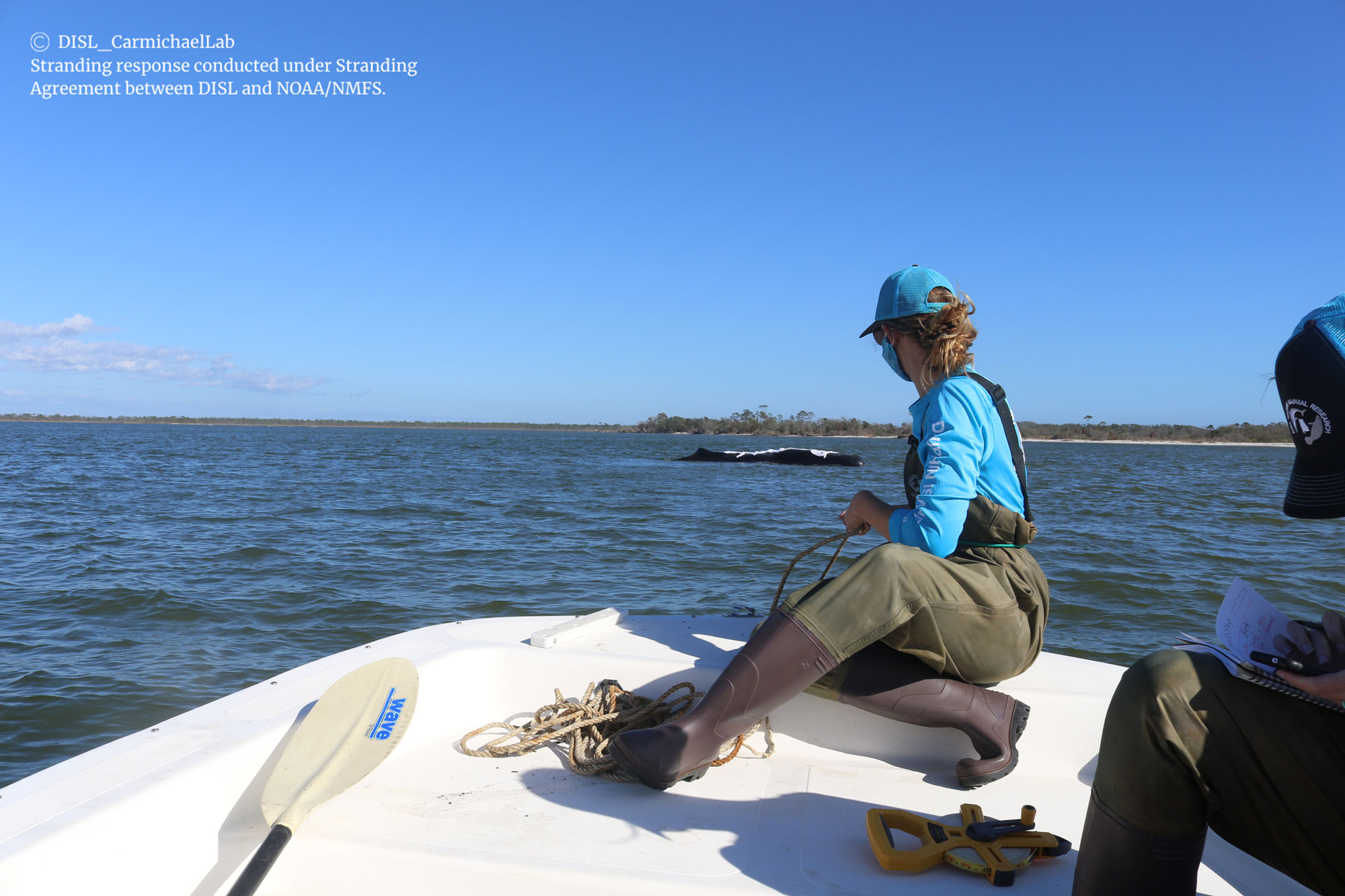(February 25, 2021) --

A post-mortem exam of the sperm whale that stranded in Mobile Bay late last year showed signs of chronic malnourishment. This finding suggests that the whale likely had not eaten during the weeks or even months before stranding. The post-mortem exam, also called a necropsy (animal autopsy), was conducted under MMPA/ESA permit no. 18786-04 by the Alabama Marine Mammal Stranding Network (ALMMSN) to determine why the whale, which normally inhabits deep ocean waters, stranded inside Mobile Bay.
“The sperm whale was a young adult male that was more than 33-ft long and weighed over 32,000 lbs,” stated ALMMSN Veterinarian, Dr. Jennifer Bloodgood. ALMMSN provided stranding photographs of the whale’s flukes (tail) to the National Oceanic and Atmospheric Administration’s (NOAA) Southeast Fisheries Science Center, which collects and maintains photographs to identify individual whales, much like using a human fingerprint. “We learned that this whale was previously photographed in the Gulf of Mexico in 2012, nearly 200 miles off the coast of southwestern Florida. Based on this and other natural history information, we estimate this whale was between 12 and 20 years old,” said Bloodgood.
The sperm whale was first reported to ALMMSN on November 19, 2020, near Weeks Bay, Alabama and stranded multiple times within Mobile Bay over the next several days. Veterinarians on the scene in coordination with NOAA’s National Marine Fisheries Service determined that euthanasia was the best and most humane outcome for this whale.
Following euthanasia, a necropsy consisting of both an external and internal examination confirmed the whale was in very thin body condition and its stomach chambers were empty except for indigestible, hard parts including squid beaks and shell fragments from crustaceans. “While malnourishment itself could have led to the whale’s stranding, the reason behind the malnourishment remains unknown,” said Bloodgood. “We were able to examine or test for several other common causes of stranding, such as some infectious diseases, marine debris, and trauma, but those were ruled out.”
During the necropsy, ALMMSN collected more than 450 samples to better understand this stranding and learn more about Gulf of Mexico sperm whales. Some tests, including for contaminants, such as heavy metals and biotoxins, are pending results.
Sperm whales are protected under the Endangered Species Act and the Marine Mammal Protection Act. There are thought to be less than 800 individuals living in the Gulf of Mexico. On average, only two sperm whales strand per year in the Gulf, and this was the first live sperm whale to ever strand in Alabama.
This case highlights the importance of rapid reporting of sick, injured, or deceased marine mammals to your local stranding network. Information collected by ALMMSN from this stranding will be important to better understand sperm whale populations in the Gulf of Mexico and what can be done to further protect this endangered species. If you find a stranded marine mammal in Alabama, please call ALMMSN at 1-877-WHALE-HELP (942-5343) as soon as possible.